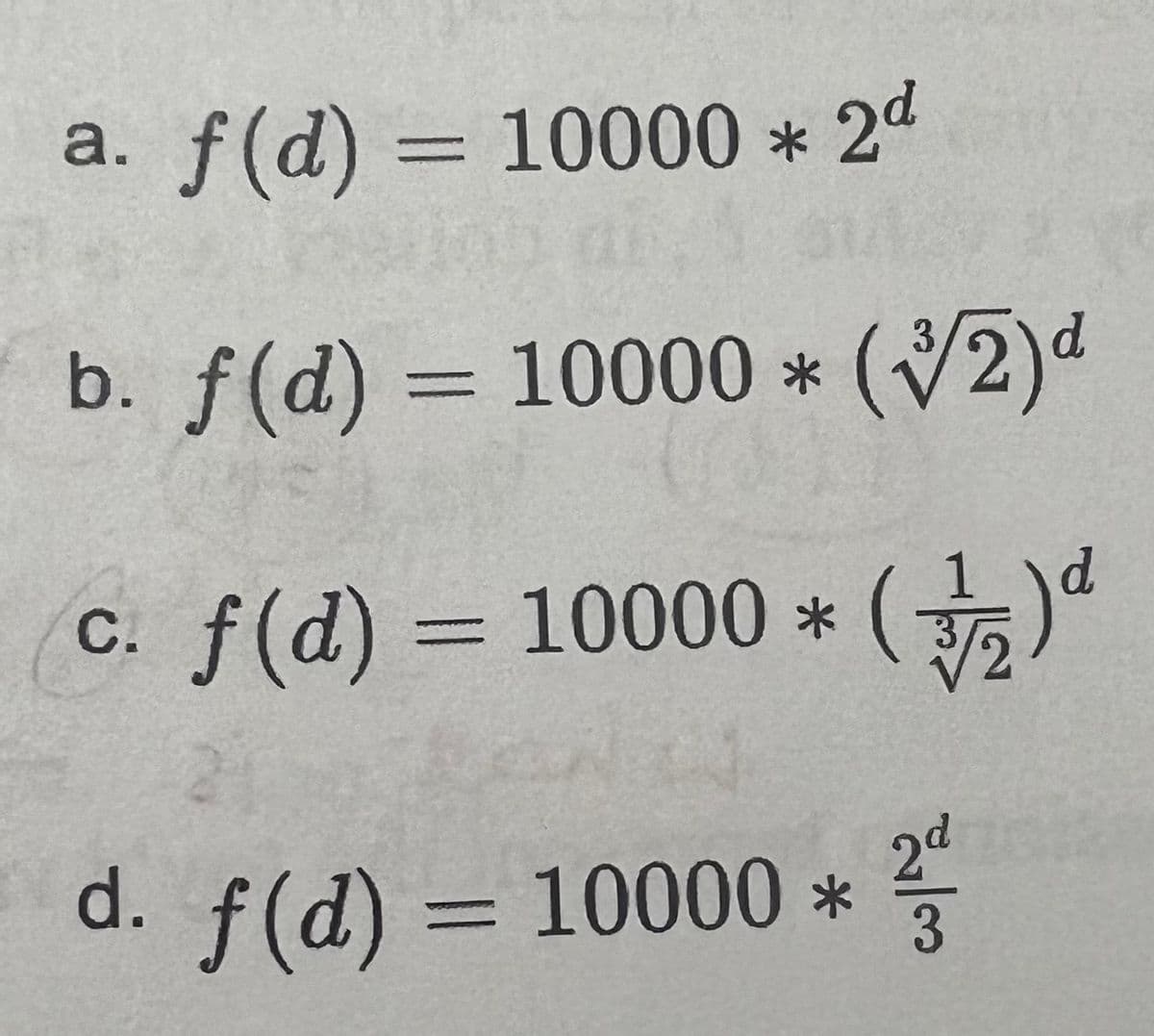Scientists measure a bacteria population and find that it is 10,000. Three days later, they find that the population has doubled. Which function f could describe the bacteria population d days after the scientists first measured it assuming it grows exponentially?
Scientists measure a bacteria population and find that it is 10,000. Three days later, they find that the population has doubled. Which function f could describe the bacteria population d days after the scientists first measured it assuming it grows exponentially?
Chapter12: Sequences, Series And Binomial Theorem
Section12.3: Geometric Sequences And Series
Problem 12.58TI: What is the total effect on the economy of a government tax rebate of $500 to each household in...
Related questions
Question

Transcribed Image Text:a. f(d) = 10000 * 2d
3
b. f(d) = 10000 * (2)d
%3D
f (d) 3D 10000 * ()
C.
2d
d. f(d) = 10000 *
/3

Transcribed Image Text:Scientists measure a bacteria population and find that it is 10,000. Three days later, they find that the
population has doubled. Which function f could describe the bacteria population d days after the
scientists first measured it assuming it grows exponentially?
Expert Solution
Given
Trending now
This is a popular solution!
Step by step
Solved in 2 steps

Recommended textbooks for you

